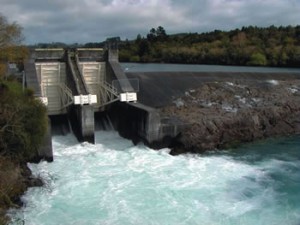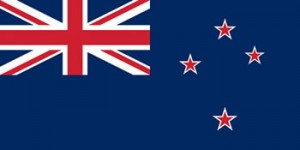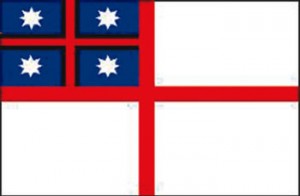Waitangi Day – 6 February
This day commemorates the signing of the Treaty of Waitangi on 6 February 1840 by representatives of the British Crown and a number of Maori Chiefs at the residence of the official British resident at Waitangi, James Busby, in the Bay of Islands. At this time there were about 2000 Europeans and 200,000 Maori residing in NZ. In the weeks afterwards copies of the treaty were taken around the country and signed by other chiefs. While some tribes declined to sign, enough chiefs put their names to the document to make it a real compact between the Crown and Maori. Maori had no central authority but in 1835 a significant group of chiefs signed a document signalling the Independence of the Tribes of New Zealand . The declaration and the flag were recognised by James Busby on behalf of King William IV of Britain.
The articles of the Treaty of 1840 ceded governship(kawanatanga) to the British Crown of the country but retained chieftainship (rangitiratanga) over their lands and fisheries. The third article guaranteed Maori the rights and freedom of British subjects. On the day of the signing, the Catholic Bishop Pompallier who was present at both meetings of chiefs prior to the signing, gained a verbal promise from the Governor that all faiths would be protected by him. 
The Treaty has had a chequered career. Maori generally regard it as a treasure (taonga), but Europeans have run hot and cold, and at some times it has been more honoured in the breach. The low point came in 1877 when Chief Justice Prendergast declared the treaty “a simple nullity”.
The key issue was the alienation of land and the colonists’ hunger for land soon swept aside any restraint, and this lead to the Land Wars of the 1860s which were followed by large scale confiscations in favour of the colonists. Appeals to the courts proved futile, and soon the Maori population was in decline, and observers spoke of the extinction of a nation deprived of land and culture.
Maori leaders continued to petition the authorities. In the latter half of last century the Treaty was at last honoured by the Government and The Waitangi Tribunal set up to address historical grievances. Eventually this was backdated to 1840 and many tribes have sought and obtained compensation from the Crown for the loss of lands and fisheries.
February 6th was established as Waitangi Day - a national holiday.
The NZ Catholic Bishops have supported the aspirations of Maori, except for the odd blip. Bishop Redwood commented:
'From 1868 the Māoris were unwilling to listen to their pastors, and the latter, called away to minister to the rapidly increasing Europeans, left the Maoris to their insubordination, and attended to the souls of the Europeans.’ *
A French Marist missionary who insisted on attending Māori hui and composing Māori hymns was given his marching orders by a Marist Bishop.
 In NZ politics, Māori issues are continually on the boil. Each new issue is usually referred to the Tribunal for a recommendation. The Tribunal may advise the Crown, and if the Crown does not like the advice, nothing may happen. Most recently the Government has wanted to sell down shares in hydro power stations to reduce debt. Māori groups have challenged the Government over the ownership of the water. The High court has to rule whether this sale can go ahead.
In NZ politics, Māori issues are continually on the boil. Each new issue is usually referred to the Tribunal for a recommendation. The Tribunal may advise the Crown, and if the Crown does not like the advice, nothing may happen. Most recently the Government has wanted to sell down shares in hydro power stations to reduce debt. Māori groups have challenged the Government over the ownership of the water. The High court has to rule whether this sale can go ahead.
‘Everything we do in NZ comes back to the Treaty.’
New Zealand does not have a written constitution. An attempt to enact the Treaty of Waitangi as supreme law as part of a Bill of Rights failed in 1990. Constitutional law is being written all the time, by acts of Parliaments, decisions of the High Court, by binding referenda, and by every decision of the Waitangi Tribunal. Constitutional lawyer Mai Chen said recently that everything we do in NZ comes back to the Treaty. 
My freedom to practice my religion goes back to the Treaty; every law we enact must pass the scrutiny of the Treaty. Every piece of land we inhabit has been part of a treaty settlement. The treaty is in a sense is a piece of parchment with no legal status. But its symbolic power is huge for our nationhood. Its moral imperative is all pervasive. It is a living document in reality.
*Bishop F Redwood quoted by L.G. Keys in Philip Viard Bishop ( Christchurch: Pegasus Press 1968 P.203 )

 Entries(RSS)
Entries(RSS)